Tag Archives: machine learning
What is Human Data Science?
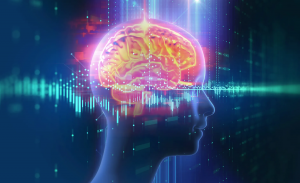
There’s a lot of buzz around the term “human data science.” What is it, and why should you care? Human data science is a relatively new field that combines the study of humans with the techniques of data science. By understanding human behavior and using big data techniques, unique and actionable insights can be obtained that weren’t possible before. In this blog post, we’ll discuss what human data science is and give some examples of how it’s being used today. What is human data science? Human data science is the study of humans using data science techniques. It’s a relatively new field that is growing rapidly as we learn more …
Pricing Optimization & Machine Learning Techniques

Pricing is a critical component of price optimization. In this blog post, we will dive into pricing optimization techniques and machine learning use cases. Price optimization techniques are used to optimize pricing for products or services based on customer response. AI / Machine learning can be leveraged in pricing optimization by using predictive analytics to predict consumer demand patterns and identify optimal prices for a products or services at a given time in the future. What is pricing optimization? Price optimization is a process where businesses use price discrimination to maximize revenue from customers. It is the process of pricing goods and services to maximize profits by taking into account …
Cash Forecasting Models & Treasury Management
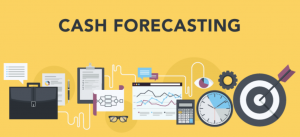
As a business owner, you are constantly working to ensure that your company has the cash it needs to operate. Cash forecasting is one of the most important aspects of treasury management, and it’s something that you should be paying attention to. Cash forecasting is a great example of where machine learning can have a real impact. By using historical data, we can build models that predict future cash flow for a company. This enables treasury managers to make better decisions about how to allocate resources and manage risks. As data scientists or machine learning engineers, it is important to be able to understand and explain the business value of …
Accounts Payable Machine Learning Use Cases

The machine learning for accounts payable market is expected to grow from $6.1 million in 2016 to $76.8 million by 2021, at a compound annual growth rate (CAGR) of 53 percent. The software industry is rapidly embracing machine learning for account payable. As account payable becomes more automated, it also becomes more data-driven. Machine learning is enabling account payables stakeholders to leverage powerful new capabilities in this arena. In this blog post, you will learn machine learning / deep learning / AI use cases for account payable. What is Accounts Payable? Account payable is a crucial part of the business process because it helps to ensure that businesses have the …
85+ Free Online Books, Courses – Machine Learning & Data Science
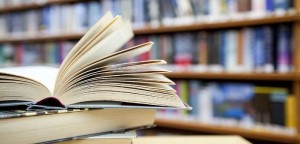
This post represents a comprehensive list of 85+ free books/ebooks and courses on machine learning, deep learning, data science, optimization, etc which are available online for self-paced learning. This would be very helpful for data scientists starting to learn or gain expertise in the field of machine learning / deep learning. Please feel free to comment/suggest if I missed mentioning one or more important books that you like and would like to share. Also, sorry for the typos. Following are the key areas under which books are categorized: Data science Pattern Recognition & Machine Learning Probability & Statistics Neural Networks & Deep Learning Optimization Data mining Mathematics Here is my post …
Tensor Explained with Python Numpy Examples

Tensors are a hot topic in the world of data science and machine learning. But what are tensors, and why are they so important? In this post, we will explain the concepts of Tensor using Python Numpy examples with the help of simple explanation. We will also discuss some of the ways that tensors can be used in data science and machine learning. When starting to learn deep learning, you must get a good understanding of the data structure namely tensor as it is used widely as the basic data structure in frameworks such as tensorflow, PyTorch, Keras etc. Stay tuned for more information on tensors! What are tensors, and why are …
Supplier Relationship Management & Machine Learning / AI
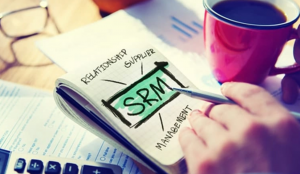
Supplier relationship management (SRM) is the process of managing supplier relationships to develop and maintain a strategic procurement partnership. SRM includes focus areas such as supplier selection, procurement strategy development, procurement negotiation, and performance measurement and improvement. SRM has been around for over 20 years but we are now seeing new technologies such as machine learning come into play. What exactly does advanced analytics such as artificial intelligence (AI) / machine learning (ML) have to do with SRM? And how will AI/ML technologies transform procurement? What are some real-world machine learning use cases related to supplier relationships management? What are a few SRM KPIs/metrics which can be tracked by leveraging …
Artificial Intelligence (AI) for Telemedicine: Use cases, Challenges
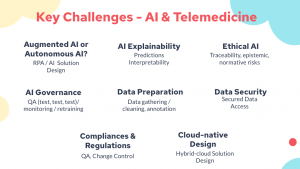
In this post, you will learn about different artificial intelligence (AI) use cases of Telemedicine / Telehealth including some of key implementation challenges pertaining to AI / machine learning. In case you are working in the field of data science / machine learning, you may want to go through some of the challenges, primarily AI related, which is thrown in Telemedicine domain due to upsurge in need of reliable Telemedicine services. What is Telemedicine? Telemedicine is the remote delivery of healthcare services, using digital communication technologies. It has the potential to improve access to healthcare, especially in remote or underserved communities. It can be used for a variety of purposes, including …
Scatter plot Matplotlib Python Example
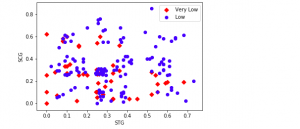
If you’re a data scientist, data analyst or a Python programmer, data visualization is key part of your job. And what better way to visualize all that juicy data than with a scatter plot? Matplotlib is your trusty Python library for creating charts and graphs, and in this blog we’ll show you how to use it to create beautiful scatter plots using examples and with the help of Matplotlib library. So dig into your data set, get coding, and see what insights you can uncover! What is a Scatter Plot? A scatter plot is a type of data visualization that is used to show the relationship between two variables. Scatter …
Weight Decay in Machine Learning: Concepts
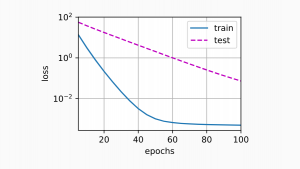
Weight decay is a popular technique in machine learning that helps to improve the accuracy of predictions. In this post, we’ll take a closer look at what weight decay is and how it works. We’ll also discuss some of the benefits of using weight decay and explore some possible applications. As data scientists, it is important to learn about concepts of weight decay as it helps in building machine learning models having higher generalization performance. Stay tuned! What is weight decay and how does it work? Weight decay is a regularization technique that is used to regularize the size of the weights of certain parameters in machine learning models. Weight …
Softmax Regression Explained with Python Example

In this post, you will learn about the concepts of what is Softmax regression/function with Python code examples and why do we need them? As data scientist/machine learning enthusiasts, it is very important to understand the concepts of Softmax regression as it helps in understanding the algorithms such as neural networks, multinomial logistic regression, etc in a better manner. Note that the Softmax function is used in various multiclass classification machine learning algorithms such as multinomial logistic regression (thus, also called softmax regression), neural networks, etc. Before getting into the concepts of softmax regression, let’s understand what is softmax function. What’s Softmax function? Simply speaking, the Softmax function converts raw …
Information Theory, Machine Learning & Cross-Entropy Loss
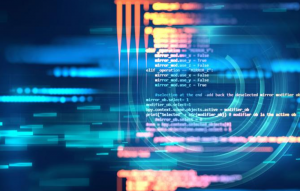
What is information theory? How is information theory related to machine learning? These are some of the questions that we will answer in this blog post. Information theory is the study of how much information is present in the signals or data we receive from our environment. AI / Machine learning (ML) is about extracting interesting representations/information from data which are then used for building the models. Thus, information theory fundamentals are key to processing information while building machine learning models. In this blog post, we will provide examples of information theory concepts and entropy concepts so that you can better understand them. We will also discuss how concepts of …
Tensor Broadcasting Explained with Examples
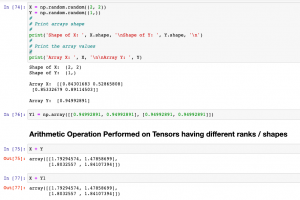
In this post, you will learn about the concepts of Tensor Broadcasting with the help of Python Numpy examples. Recall that Tensor is defined as the container of data (primarily numerical) most fundamental data structure used in Keras and Tensorflow. You may want to check out a related article on Tensor – Tensor explained with Python Numpy examples. Broadcasting of tensor is borrowed from Numpy broadcasting. Broadcasting is a technique used for performing arithmetic operations between Numpy arrays / Tensors having different shapes. In this technique, the following is done: As a first step, expand one or both arrays by copying elements appropriately so that after this transformation, the two tensors have the …
Regularization in Machine Learning: Concepts & Examples
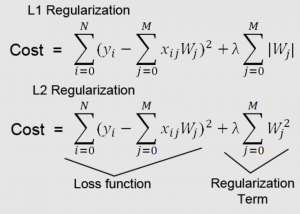
In machine learning, regularization is a technique used to avoid overfitting. This occurs when a model learns the training data too well and therefore performs poorly on new data. Regularization helps to reduce overfitting by adding constraints to the model-building process. As data scientists, it is of utmost importance that we learn thoroughly about the regularization concepts to build better machine learning models. In this blog post, we will discuss the concept of regularization and provide examples of how it can be used in practice. What is regularization and how does it work? Regularization in machine learning represents strategies that are used to reduce the generalization or test error of …
SVM Classifier using Sklearn: Code Examples
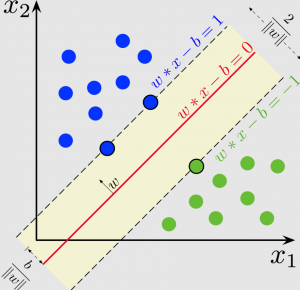
In this post, you will learn about how to train an SVM Classifier using Scikit Learn or SKLearn implementation with the help of code examples/samples. An SVM classifier, or support vector machine classifier, is a type of machine learning algorithm that can be used to analyze and classify data. A support vector machine is a supervised machine learning algorithm that can be used for both classification and regression tasks. The Support vector machine classifier works by finding the hyperplane that maximizes the margin between the two classes. The Support vector machine algorithm is also known as a max-margin classifier. Support vector machine is a powerful tool for machine learning and has been widely used …
Stochastic Gradient Descent Python Example

In this post, you will learn the concepts of Stochastic Gradient Descent (SGD) using a Python example. Stochastic gradient descent is an optimization algorithm that is used to optimize the cost function while training machine learning models. The most popular algorithm such as gradient descent takes a long time to converge for large datasets. This is where the variant of gradient descent such as stochastic gradient descent comes into the picture. In order to demonstrate Stochastic gradient descent concepts, the Perceptron machine learning algorithm is used. Recall that Perceptron is also called a single-layer neural network. Before getting into details, let’s quickly understand the concepts of Perceptron and the underlying learning …
I found it very helpful. However the differences are not too understandable for me